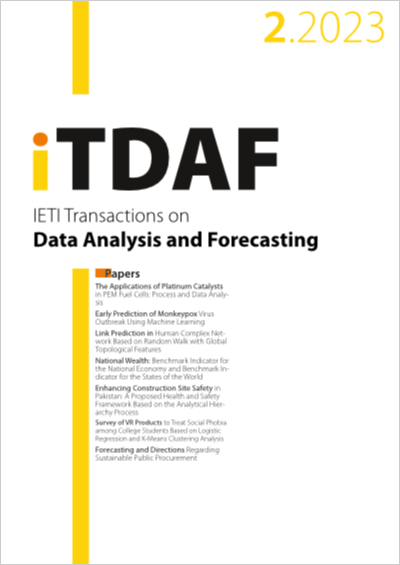Early Prediction of Monkeypox Virus Outbreak Using Machine Learning
DOI:
https://doi.org/10.3991/itdaf.v1i2.40175Keywords:
Epidemiological Analysis, Time Series, Machine Learning, Monkeypox VirusAbstract
At the onset of an infectious disease, such as the monkeypox virus (MPXV), surveillance data is crucial in keeping track of the outbreak’s progression. The surveillance data for MPXV received considerable attention after multiple European countries recorded cases. Historical data obtained from May 9, 2022, to August 10, 2022, were used to model the cumulative case trajectories of MPXV in five countries. Our study employed autoregressive integrated moving averages (ARIMA), neural network autoregression (NNETAR), exponential smoothing (ETS), and seasonal naïve regression (SNAÏVE) for training and evaluation. The paper makes the following contributions: (1) enhanced model stability with the Box-Cox transformation as a preprocessing step, (2) experimentation with both linear and non-linear models, and (3) simulation of the top five countries during the impulsive rise in cases of MPXV. The results were evaluated using three metrics: root mean square error (RMSE), mean square error (MAE), and mean absolute percentage error (MAPE). The ARIMA (0,1,3) (1,0,0)[7] model yielded the lowest percentage error of 5.16 in the holdout set for MAPE in France observations. The ETS (A, A, A) model, the lowest percentage error in the holdout set for MAE was 7.35 in Germany. Regarding the NNETAR (1,1,2) [7] model, the lowest percentage error in the holdout observations for RMSE was 8.33 in Spain, 2.75 in the United Kingdom (UK), and 8.05 in the United States of America (USA) in that order. Based on these findings, we can conclude that while the transformation proved crucial for model performance, it was not necessary for all experiments, as ARIMA remained dominant in France and the ETS model in Germany. At the same time, NNETAR model outperformed in cumulative case counts in Spain, the UK, and the USA. Our experimentation allows for early identification and contributes to a better understanding of forecasting MPXV cases using combinations of both linear and nonlinear models.
Downloads
Published
How to Cite
Issue
Section
License
Copyright (c) 2023 Oluwole Akinola, Wang Qingguo, Marwala Tshilidzi, Peter Olukanmi

This work is licensed under a Creative Commons Attribution 4.0 International License.


